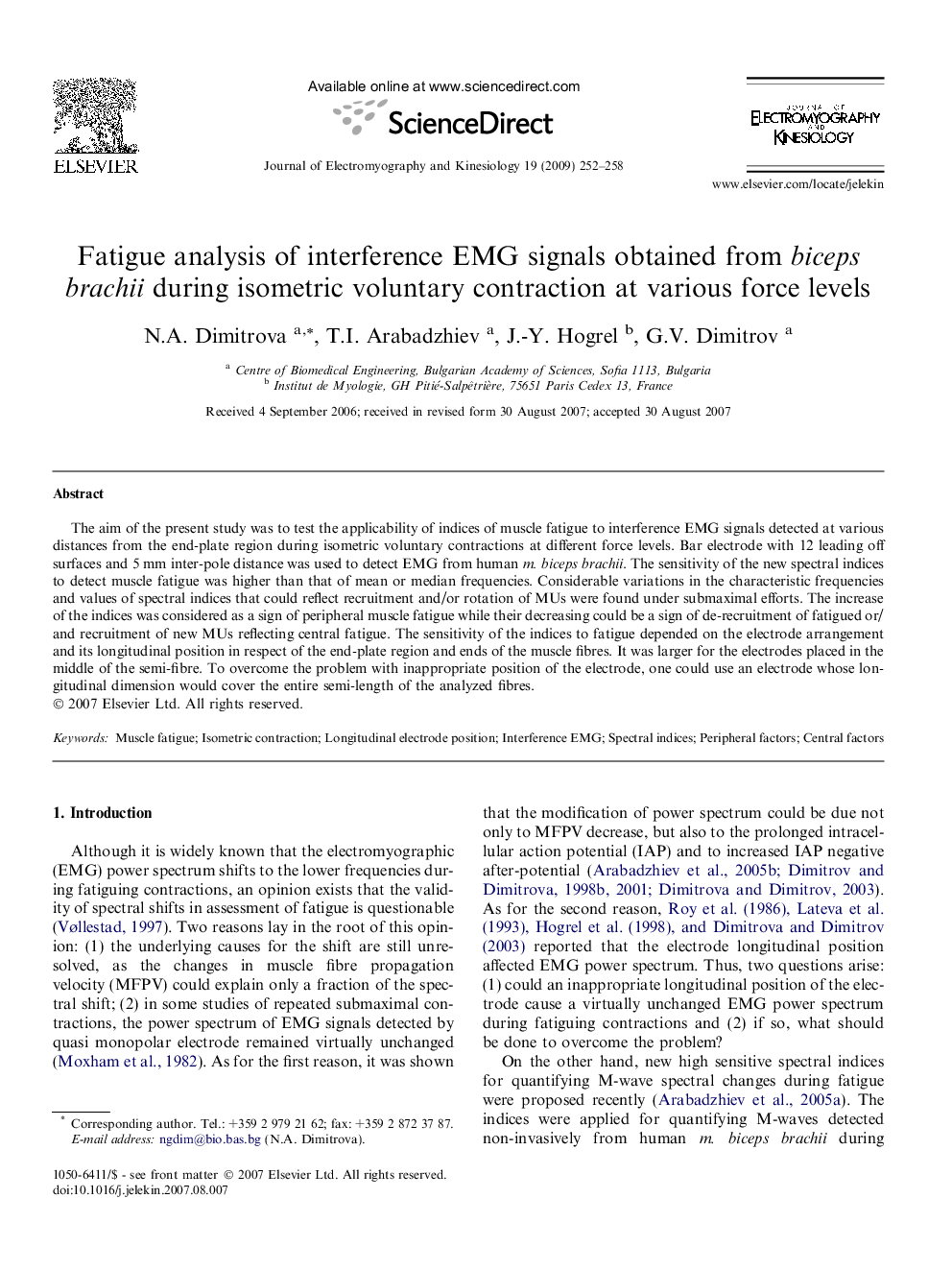| کد مقاله | کد نشریه | سال انتشار | مقاله انگلیسی | نسخه تمام متن |
|---|---|---|---|---|
| 4065553 | 1266257 | 2009 | 7 صفحه PDF | دانلود رایگان |

The aim of the present study was to test the applicability of indices of muscle fatigue to interference EMG signals detected at various distances from the end-plate region during isometric voluntary contractions at different force levels. Bar electrode with 12 leading off surfaces and 5 mm inter-pole distance was used to detect EMG from human m. biceps brachii. The sensitivity of the new spectral indices to detect muscle fatigue was higher than that of mean or median frequencies. Considerable variations in the characteristic frequencies and values of spectral indices that could reflect recruitment and/or rotation of MUs were found under submaximal efforts. The increase of the indices was considered as a sign of peripheral muscle fatigue while their decreasing could be a sign of de-recruitment of fatigued or/and recruitment of new MUs reflecting central fatigue. The sensitivity of the indices to fatigue depended on the electrode arrangement and its longitudinal position in respect of the end-plate region and ends of the muscle fibres. It was larger for the electrodes placed in the middle of the semi-fibre. To overcome the problem with inappropriate position of the electrode, one could use an electrode whose longitudinal dimension would cover the entire semi-length of the analyzed fibres.
Journal: Journal of Electromyography and Kinesiology - Volume 19, Issue 2, April 2009, Pages 252–258